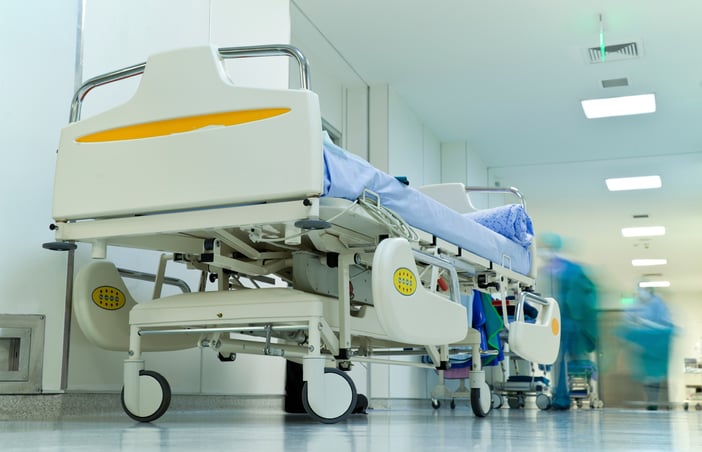
As we have witnessed through recent natural disasters, hospitals are not immune to power loss. Even a brief disruption in power can affect many critical systems within the hospital. Medical vacuum is one example.
Most hospitals rely on a central source for their vacuum. Generally, a pump, or pumps, in the basement creates the vacuum that is delivered throughout the hospital through a series of pipes. Without electricity, the pump cannot function, and the vacuum is lost. Let’s review how this impacts normal hospital function and ways to mitigate this issue.
Suctioning and Patient Procedures
Practitioners utilize medical vacuum for several types of patient procedures.
- Pharyngeal Suction – For patients who have difficulty clearing their airways, suction may be needed to remove mucus and vomit from their mouth and throat to avoid aspiration.
- Tracheal Suction – Patients who have artificial airways, such as an endotracheal tube or tracheotomy, require frequent suctioning to keep the lower airway clear of excessive secretions.
- Pleural Suction – Following a pneumothorax, suction is generally needed to remove air and fluid from the pleural space so the lung can re-expand.
- Surgical Suction – Suction is used to clear the surgical field of blood, secretions, and irrigation fluids.
- Gastrointestinal Suction – Following certain surgical procedures or after major trauma, it is necessary to keep the stomach and intestines clear of gastric drainage. In cases like this, intermittent suction is often applied through a nasogastric tube.
If the in-wall vacuum failed to work as a result of hospital power loss, patients’ lives could be endangered. Consider that some of the most compromised patients would be the ones directly affected: surgical patients, intubated patients, and those who can’t maintain a patent airway. These patients are also likely to be receiving additional medical interventions, such as supplemental oxygen, IV infusions, or ventilator support - all of which would be impacted by a loss of electricity.
Having portable suction machines readily available in these areas would allow for the continuation of safe patient care. Additionally, battery-powered aspirators that run solely on alkaline batteries would ensure that medical suction would be available even during an extended power outage.
The Pneumatic Tube System
The majority of hospitals utilize a pneumatic tube system to transport materials throughout the hospital. For example, a STAT CBC can be sent quickly to the lab, the pharmacy can dispense needed pain medication or antibiotics directly to the patient’s unit, and the blood bank can supply life-saving packed red blood cells or platelets. But, since many tube systems are vacuum-driven, a loss of power would render the system unusable.
Here’s the good news: A plan for handling a non-working tube system already exists. All tube systems have scheduled periods of regular maintenance during which the tubes will not run, and deliveries are made using manpower instead.
Look at these system downtimes as an opportunity to improve the process. How long does it take to get a specimen to the lab? Who needs to be notified when a medication is needed STAT from the pharmacy? What can be done to make the delivery easier? The routine practice of the established plan will ensure that things are still transported quickly and efficiently, even in the case of a sudden power outage.
The Best Defense is a Good Offense
As the saying goes, the best defense is a good offense. Taking proactive steps to prepare for handling a potential loss of power and loss of vacuum will allow your hospital to respond to any emergency that it encounters.
Editor's Note: This blog was originally published in July 2015. It has been re-published with additional up to date content.
















